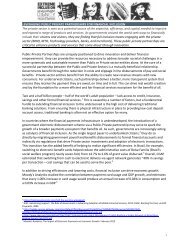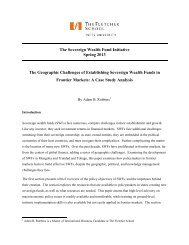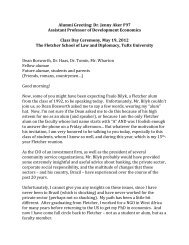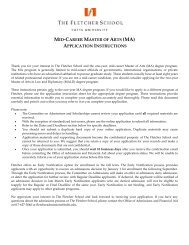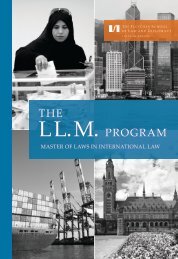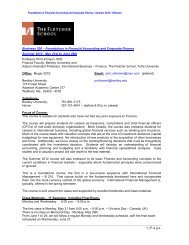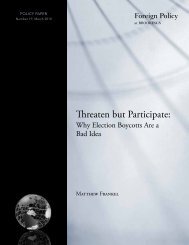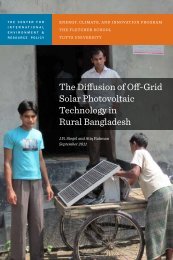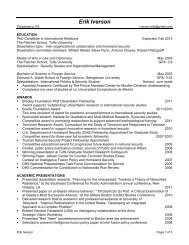creating a mutual Gains climate regime through universal clean ...
creating a mutual Gains climate regime through universal clean ...
creating a mutual Gains climate regime through universal clean ...
You also want an ePaper? Increase the reach of your titles
YUMPU automatically turns print PDFs into web optimized ePapers that Google loves.
Creating a Mutual <strong>Gains</strong> Climate Regime Through Universal Clean Energy Services2.1 Misdiagnosis of the ProblemWhen pressed to increase their commitment to reduce emissions, the responses ofgovernment officials are remarkably similar, and illustrate a near-<strong>universal</strong> agreementof why the current approach fails.• ‘We will not cut our development potential’. 1• (Our) ‘lifestyle is not up for negotiation’. 2• (It) ‘would cost us jobs and damage our industry’. 3• (It) ‘would have a negative impact on the living standards (. . .) and for thecompetitiveness and for our businesses’. 4• ‘A more ambitious target would constrict (our) development space’. 5Each of these statements is from a different world leader (President Dmitri Medvedevof Russia, President George W. Bush of the US, Prime Minister John Howard ofAustralia, Environment Minister Maciej Nowak of Poland and Environment MinisterJairam Ramesh of India, respectively), but they reflect a common concern: morestringent emission targets have been interpreted to mean a negative impact on thequality of life and a restriction on countries’ development potentials. The commonbelief is that increased GHG emissions mean more economic development. Becauseeconomic development is so heavily driven by energy, and nearly 85% of primary energyis from fossil fuels that produce CO 2(Smil, 2006; IPCC, 2012), most governments(mistakenly) equate emissions with development. When they make this assumption,acting on <strong>climate</strong> change is seen as an additional drain on economic development,which is assuredly not in the national interest of any country.However, emissions are only a symptom of the underlying problem: unsustainabledevelopment (see also Prins et al., 2010). The key question is not how to limit emissionsor place constraints on the output of unsustainable development, but how to placeconstraints on the inputs in the development process, so that countries at differentlevels of development can make the transition to more <strong>climate</strong>-friendly developmentpathways (Heller and Shukla, 2003; Birdsall and Subramanian, 2009). Focusing onthe symptoms of <strong>climate</strong> change has sidelined the imperative of rethinking the verychoice of fossil fuels as inputs into the development process and diverts attention awayfrom development strategies with ancillary <strong>climate</strong> benefits (IPCC, 2012). The KyotoProtocol attempted to assist developing countries in <strong>climate</strong> change mitigation: theClean Development mechanism (CDM) allows the crediting of emission reductions1Russian President Dmitri Medvedev, quoted in Shuster (2009).2George Bush refered to the American lifestyle when stating the US position at the 1992 EarthSummit.3In 2002, Australian Prime Minister Howard explained why Australia would not ratify the Kyoto Protocol(Howard, 2002).4Polish Environment Minister Maciej Nowicki quoted in AFP (2008).5India’s environment and forests minister Jairam Ramesh quoted in Venu and Narendranath (2010).4 Center for International Environment and Resource Policy, The Fletcher School, Tufts University



